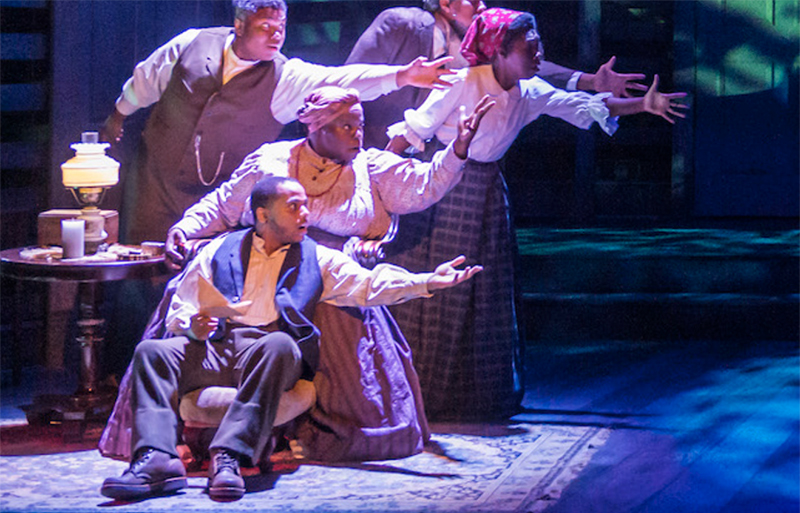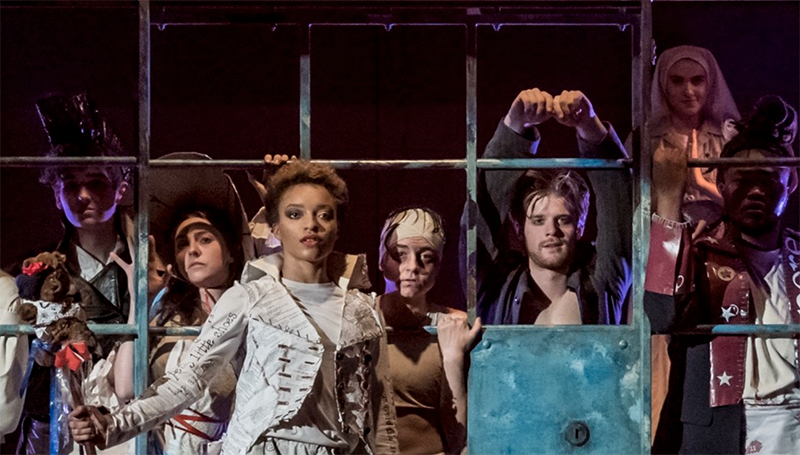In 2016, the University of Illinois Department of Theatre developed a clear mission: to achieve a concept of “radical inclusion.” But what does this really mean? And have they achieved it?
The shows that Illinois Theatre has produced in the last four years have varied widely in theme, from incendiary political commentaries like Marat/Sade to intricately woven interpersonal dramas like The Wolves. But all of these productions have been tied together by a common goal: radical inclusion
If you visit the Illinois Theatre website and look at its mission statement, it says as much; the first sentence reads “We stand for radical inclusion.” But what does radical inclusion actually mean, and what kind of practices does it entail?
For Producer, Acting Chair and Associate Theatre Professor Lisa Gaye Dixon, the development of this term gives her insight into its meaning.
“The idea of radical inclusion came from a conference that myself and Professor Valleri Robinson were at in 2016,” she says. At the conference, a panel of women described radical inclusion and the ways in which its utilization could be more impactful than seeking out diversity. “The idea of diversity has been around since the 1980’s… all over the country and in different societies it has been, you know, sort of bastardized or changed or softened so that the word ‘diversity’ sometimes doesn’t mean a lot. So we were trying to make it be more specific and succinct to our needs as a department of academic producing theatre, but theatre that’s also trying to produce for people who are going out to work in the profession.”
Head of Theatre Gabriel Solis also adds that within the concept of radical inclusion is perhaps an even more powerful term: equity.
“In the group of words that gets used in institutions—diversity, equity, and inclusion—I think equity in some ways is the most potentially radical of all of them. Because it’s one thing to say, ‘We need lots of different types of people around’… But it’s another thing to say, ‘We should strive to create equitable conditions for everyone here.’”
Dixon lists three areas within the department that may be principally affected by the goal of radical inclusion: productions, academic work, and faculty/staffing. While the goals for change within these areas may differ by individual, making sure that equity is incorporated into the curriculum stands as a general consensus.
One specific effort that Illinois Theatre has made in service of promoting racial equity is intentionally recruiting guest artists of color with diverse backgrounds and artistic perspectives. Recent guest artists have included directors Chuck Smith and Tyrone Phillips. The department also places a large focus on alumni of the program that have made steps in the professional theatre world to fight for racial equity.
Dixon asserts that theatre designers have a tangible impact on promoting racial equity as well. “How do we look at the idea of fashion, and how do we look at the idea of the body? How do we use our creative design work to—whether it’s in a traditional piece or a new piece —how do we use that to help to create a space where we aren’t looking at bodies in just the sort of Western, traditional sense of either beauty or functionality? … This is something that is specifically discussed and taught in classes that may not have been in traditional design programs in years past.”

Illinois Theatre also places a significant emphasis on racial diversity in season selections and on incorporating the concept of racial equity into all elements of a show, starting with the very first production meeting. Dixon says that these conversations have gotten easier and less strained in recent years.
But the question remains: is all of this enough to say that Illinois Theatre has achieved its goal of radical inclusion?
According to Dixon, the answer is… well, multilayered. “I have felt over the last few years… there’s a recognition for a lot of folks that they all have to do much of the work on themselves as well as work on the institution,” she reflects. “And so I have felt, even though, you know, like any person might be frustrated with anything in any job… But I have felt that there has always been room to have voices be heard that may not be a part of the power structure as per usual.”
Undergraduate Theatre Studies senior Jordan Ratliff also feels that — while there is always room to grow — there is a largely open atmosphere in the department for discussing and promoting racial equity. “Two years ago, I was part of the student advisory board, and we tried to make an initiative to have meetings with underrepresented groups. And one of them was for underrepresented racial groups.” While this initiative ultimately dissolved due to scheduling issues, he says that the students who were able to attend these meetings found them to be extremely helpful for discussing the problems they were experiencing as well as potential solutions.
So what lies ahead for Illinois Theatre?
Just as a five-year plan was developed in 2016, another one is in the works for the next few years. “We now have a task force working to look at this and to make recommendations. I believe very strongly in collaborative work and consensus-building,” Solis says. All levels of Illinois Theatre—undergraduates, graduates, and faculty—are involved in this task force.
But from a student’s perspective, Ratliff would still like to see more of an effort made in the classroom to promote racial inclusion. “We try to very much promote shows that are racially diverse and try to cast shows with, like all-black casts in certain shows and shows about Latinx culture and things like that, but other than that I haven’t seen a huge effort in the department side… Other than a few emails we’ve gotten this semester about Black Lives Matter, and the department’s stance on the movement…I understand that it’s very hard during these times, but there haven’t been any Zoom meetings sent out… I don’t see much of an effort at the moment of trying to do that.” And while there is a generally open atmosphere, “it can be hard for students of an underrepresented group to find professors in the department who they can share this information with because the majority of the department’s faculty is white. So I think that trying to arrange those spaces even in these times could be very helpful for students of underrepresented racial groups.”








